Search
Search Results
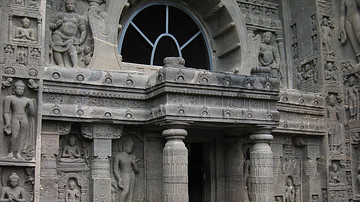
Definition
Ajanta
Approximately 67 miles (107 km) to the north of Aurangabad in the Indhyadri range of Western Ghats lie the caves of Ajanta. The 30 caves, famous for their early Buddhist temple architecture and many delicately drawn murals, are located in...
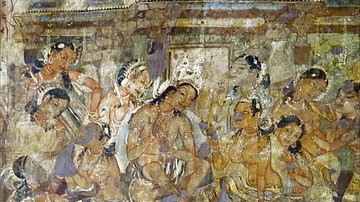
Article
The Ajanta Caves
The 30 caves at Ajanta lie to the north of Aurangabad in the Indhyadri range of Western Ghats. The caves, famous for their temple architecture and many delicately drawn murals, are located in a 76 m high, horseshoe-shaped escarpment overlooking...
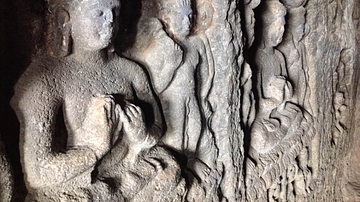
Image
Wall Carving, Ajanta Cave Complex
Wall carving in one of the inner caves of the Ajanta cave complex, an ancient Buddhist monastery and UNESCO World Heritage Site located in the Aurangabad District of Maharashtra, India. Originally built in approximately the 2nd century...
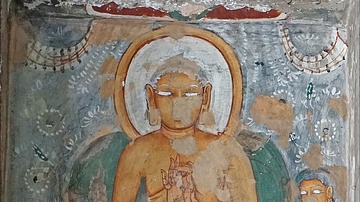
Image
Buddha, Ajanta Cave No. 10
Buddha mural, Cave 10 from Ajanta, India. The rock-cut Buddhist cave shrines of Ajanta date from the 2nd century BCE to the 6th century CE.
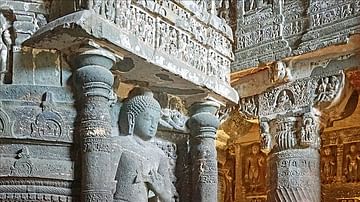
Image
Stupa in Ajanta
Ajanta (2nd century BCE – 6th century CE) sculpture showing highly evolved skills of the early Indian artists. A stupa belonging to Cave 26 is shown with sculpted figure of Buddha.
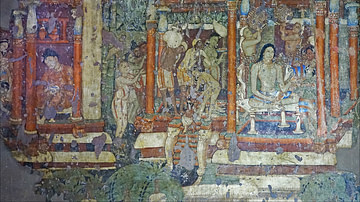
Image
Murals of Ajanta Cave
Some of the finest works of art were created in the Ajanta Caves (Maharashtra, India) between 2nd century BCE and 6th century CE. The walls of the cave are covered with murals like this. Apart from distinctive forms, clear lines and vivid...
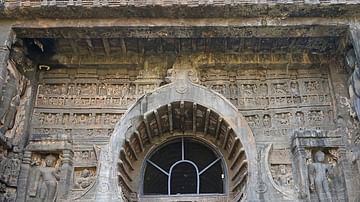
Image
Façade of an Ajanta Cave
Ajanta (Maharashtra, India), built between 2nd century BCE and 6th century CE, remains one of the marvels of art and architecture. An ornate façade of Cave 26 is shown here.
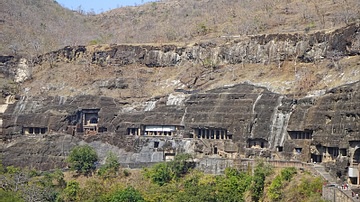
Image
The Ajanta Caves
A panoramic view of the Ajanta Caves, India. The rock-cut Buddhist cave shrines date from the 2nd century BCE to the 6th century CE.
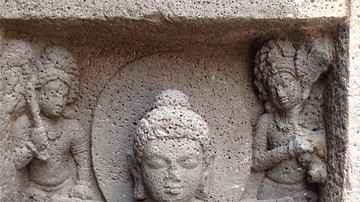
Image
Seated Buddha Figure Displaying Dharmachakra Mudra
Here, the figure seated in the lotus position features two important details: first, a halo, indicating that Prince Siddhartha has attained Enlightenment and so has become the "Buddha", or the Enlightened One, and second, the Dharmachakra...
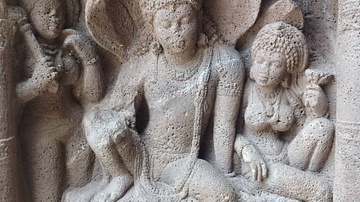
Image
Nagaraja, Ajanta
The Nagaraja - or Snake King - possibly represents either a mythical figure from Buddhist mythology, a figure from the Jataka Tales of Buddhist literature, or the headman of the local snake-worshiping tribe that lived in the same region as...